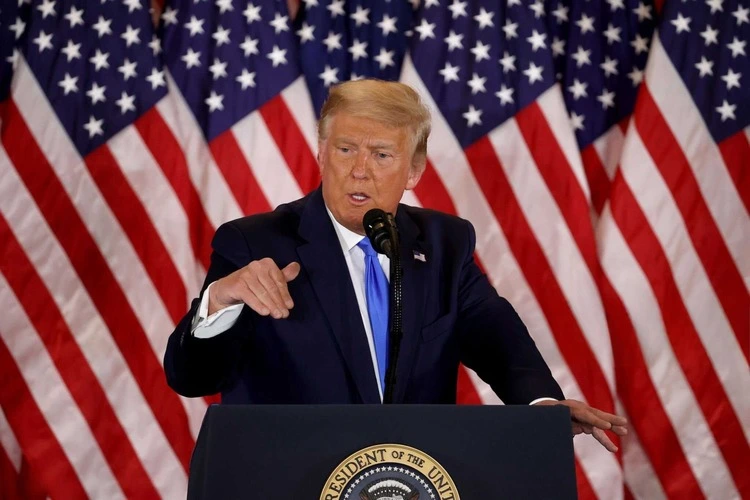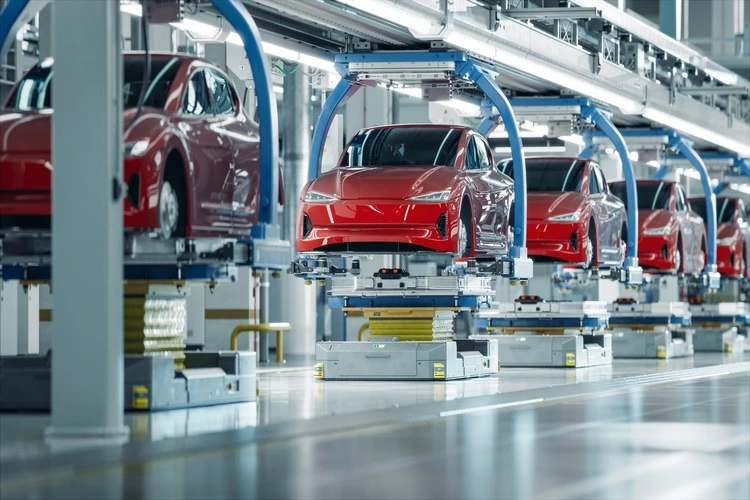
Under Trump, the US left the Paris Agreement and declared withdrawal from WHO – is this a reality the president-elect is keen to re-enact?
By
In just a few days, the US will usher in its 47th president, Donald Trump. His imminent inauguration will mark the second term in the White House for the 78-year-old politician.
During his previous presidency, Trump critiqued various organisations and policies from the UN to the Paris Agreement – pulling out of some entirely – as well as declaring longstanding trade agreements between the US and Canada as the ‘worst trade deals ever made’. While some policies enacted under his former administration have remained, many were rescinded by Biden, opening up debate as to whether Trump will head down similar political paths to recreate the America from his last presidency.
So how exactly did the Trump administration change the geopolitical landscape of the US? And what changes could the US expect to see as the president-elect enters the Oval Office for a second time?
Enjoying this article? Check out our related reads:
- What is it that Trump wants from Greenland?
- What happened when half of the world cast their vote in 2024?
- What could Trump’s ‘drill, baby, drill’ for oil mean for the US?
- What happens to the climate crisis if Trump wins in November?
UN funding cuts
Trump has previously expressed criticism of the United Nations, citing the ‘unfair’ high cost to the US of funding the body. All member states of the UN are required to contribute to the organisation’s budget, but the US is the largest donor.
However, under the previous Trump administration, contributions to certain UN efforts were suspended, such as the UN Population Fund (UNFPA) in 2017. This fund fell under an extended ban on US contributions to organisations performing or promoting abortion as a means of family planning. Trump administration’s also reduced funding for the UN Program on HIV/AIDS (UNAIDS) by 30 per cent, and the WHO by 20 per cent.
Under Trump, UN peacekeeping aid was attempted to be cut by almost half a billion dollars, an effort which while unsuccessful, did lead to caps on contributions and fewer peacekeeping missions by the General Assembly.

Following Biden’s inauguration in January 2021, efforts to refund agencies facing cuts were made, including UNFPA, who received almost $100 million in 2021, but the US still remains in arrears after four years of unpaid contributions.
Now Trump is heading for a second term, some express concerns that financial cuts may again be on the horizon.
‘Senior UN officials are pretty convinced that a second Trump administration would impose even more savage financial cuts,’ said UN director for the Crisis Group NGO Richard Gowan.
Such a reality would be a major blow to the UN, which Gowan explains is ‘already in dire financial straits’ and falling billions of dollars short of the required funding it needs to carry out essential aid.
And from the words of Trump’s press secretary Karoline Leavitt, it may appear that the hefty cost of the UN is still weighing heavy on the president-elect’s mind. In respect to questions on Trump’s plans for the UN, Leavitt said: ‘President Trump will restore world peace through American strength and ensure European nations carry their weight by paying their fair share.’
Withdrawal from WHO – part two?
Trump’s announcement to withdraw from the World Health Organisation (WHO) in the midst of the COVID-19 pandemic was a move met with little international agreement back in 2020.
Trump’s plan to redirect funds from the WHO to the US came after his accusations the organisation was ‘China-centric’ and that it did not hold China accountable for the early spread of COVID-19.
Six months later, Biden’s administration halted WHO exit plans, but according to an expert, Trump may be planning to withdraw the US again as soon as he takes office this time round.
‘I have it on good authority that he plans to withdraw [from WHO], probably on Day One or very early in his administration,’ said Lawrence Gostin, professor of global health at Georgetown University in Washington and director of the WHO Collaborating Center on National and Global Health Law.
As the largest donor to the WHO – contributing nearly a quarter of its funds – an exit from the US would leave a sizeable gap in the WHO’s budget. As such, other member states would need to increase their funding or the WHO’s operations would be scaled down, a scenario that could undermine the ability to effectively monitor disease spread and emergency response systems.
If Trump chose to leave the WHO now, it would also put the US in a precarious situation during disease outbreaks.
‘There are many things the United States can do alone, but preventing novel pathogens from crossing our borders simply is not one of them,’ said Gostin.
For example, current concerns over H5N1 avian influenza in the country are quelled by the knowledge that the US Centers for Disease Control and Prevention (CDC) and WHO work together to create vaccines and therapeutics. Shared scientific information amongst WHO member states is also of key importance. If the US pulled out, Gostin warns they would be ‘flying blind’.
However, Trump could still forge a relationship with the WHO, albeit different from how it looks today, that may mean the organisation does not miss out of the significant portion of funding from the US. Much like NGOs or charities – who make voluntary contributions to the WHO – the Trump administration may individually select projects and programs that it supports.
‘[They] may continue to fund some projects [and] activities so it’s possible that the WHO would not lose the entirety of the US contribution,’ said former WHO lawyer now working as a global health law specialist at the Geneva Graduate Institute, Gian Luca Burci.
Amping up trade tariffs
During his last presidency, Trump hit countries including China, Mexico and Canada with increased trade tariffs – taxes paid on imported goods – along with the European Union. A range of products fell under these measures, including solar panels, washing machines, steel, aluminium and products from China.
Justifying these decisions, Trump explained higher tariffs would benefit American workers (particularly those in manufacturing); allow renegotiation of trade agreements with other countries, and protect national security.
In reality, these goals didn’t materialise.
The cost of Trump tariffs fell mainly on American businesses and consumers, and while some workers in import-competing industries benefitted, others didn’t. The tariffs also did not aid the US’s ability to negotiate trade agreements, or significantly improve national security.

Most of Trump’s tariffs were not rescinded under the Biden administration, but as Trump gears up for a second term, his plans to make further tariffs could have significant economic impacts globally and impede successful climate action, as new research shows.
That’s because one of the products Trump is now concerned with is imported vehicles – so much so he has proposed a 100 per cent tariff on them, and even 200 per cent for those from Mexico under his second presidency.
According to this new research, published by Grantham Research Institute on Climate Change and the Environment at LSE, such a decision would ‘significantly impact the affordability of electric vehicles in the US market, potentially slowing adoption rates and hampering efforts to reduce transport emissions, given that imported EVs currently account for approximately 30 per cent of the US electric vehicle market.’
Further tariffs Trump has expressed a desire to enact include a universal 10 per cent import tariff on all foreign-made goods, and a 60 per cent import tariff on Chinese goods. In particular, the 10 per cent tariff would impact the GDP of European countries like Germany, whose automobile industry relies on the US significantly as its number one destination for exports.
Ultimately, amping up tariffs in the US may catalyse further economic instability down the line, as some experts warn.
‘These tariffs will impact the American economy, not just Chinese and European sectors, so Donald Trump ploughing ahead with these policies if elected would be awful for economies across the globe,’ said research elad Aurélien Saussay, Assistant Professor at the Grantham Research Institute on Climate Change and the Environment.
‘Retaliatory measures by China or the EU would likely worsen economic outcomes for all parties involved, potentially sparking a damaging trade war.’
A potential farewell to the Paris Agreement
Back in 2017, Trump announced the US would withdraw from the Paris climate agreement, a decision that due to UN regulations only took effect in 2020. The president declared the agreement ‘punished’ the US, and imposed ‘no meaningful obligations’ on major emitters including China and India.
While Biden re-entered the agreement in 2021 on the first day of his presidency – and committed to the US halving its emissions by 2030, from 2005 levels – some believe that Trump has his sights set on pulling the US out again. This would make it one of the only nations to be absent from the almost 200- country-strong commitment to lower greenhouse gas emissions.
Trump has expressed his opinions on climate change several times – last November, the president-elect remarked that climate change is ‘all a big hoax’, and in a campaign appearance told an audience ‘We don’t have a global warming problem.’
If Trump did decide to pull out from the Paris agreement, it would be a much quicker process than last time: under current terms of the agreement, this would take a year to come into effect, compared to three years like before.
But the effects of the agreement would be monumental, as UN Secretary General António Guterres cautions.
‘The Paris agreement can survive, but people sometimes can lose important organs or lose the legs and survive,’ Guterres said. ‘But we don’t want a crippled Paris agreement. We want a real Paris agreement.’




